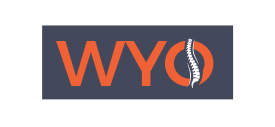Femoral Derotational Osteotomy
What is Femoral Derotational Osteotomy?
Femoral derotational osteotomy (FDO) is a surgical procedure employed for the treatment of femoral torsion and a damaged/dislocated hip joint due to spasticity in children and adults. Femoral torsion is an inward turning of the femur (thigh bone) at the hip which causes an individual’s knees and feet to turn inward giving a pigeon-toed appearance. FDO is commonly performed on toddlers for either excessive anteversion (knees pointing toward each other with toes in) or retroversion (knees pointing in opposite directions) of the femur.
Anatomy of the Hip
The hip is a ball and socket joint with the ball being formed by the head of the femur (thigh bone) and the pelvic bone forming the socket (acetabulum). A fibrocartilaginous lining called the labrum is attached to the acetabulum and further increases the depth of the socket. A smooth, white tissue called articular cartilage covers the ends of the bones, which is lubricated by synovial fluid to enable smooth movements of the bones and reduce friction. The stability of the hip is provided by the joint capsule or acetabulum, and the muscles and ligaments that surround and support the hip joint.
Indications for Femoral Derotational Osteotomy
Some of the common indications for femoral derotational osteotomy include:
- Bowed legs
- Inward toeing
- Pain in the knees, hips, and ankles
- Snapping sound in the hip
- Patellofemoral instability
- Damaged hip joint due to spasticity (extreme tightness or pulling)
Preparation for Femoral Derotational Osteotomy
Preoperative preparation for femoral derotational osteotomy will involve the following steps:
- A thorough examination of the patient is performed by your doctor to check for any medical issues that need to be addressed prior to surgery.
- Depending on the patient’s medical history, social history, and age, routine blood work and imaging may be ordered for safely conducting surgery.
- Information regarding any allergies to medications, anesthesia, or latex is obtained.
- Information is also obtained on any medications, vitamins, or supplements being taken by the individual.
- The patient should refrain from medications or supplements such as blood thinners, aspirin, or anti-inflammatory medicines for a week or two prior to surgery.
- You should refrain from alcohol or tobacco at least 24 hours prior to surgery.
- You should not consume any solids or liquids at least 8 hours prior to surgery.
- Arrange for someone to drive you home as you will not be able to drive yourself post surgery.
- A written consent will be obtained after the surgical process has been explained in detail.
Procedure for Femoral Derotational Osteotomy
The main objective of the procedure is to correct in toeing or out-toeing while walking and rotational deformities in the thigh. In general, the procedure involves the following steps:
- A general or regional anesthesia is administered to the patient.
- Your surgeon makes a surgical cut on the outside of the thigh area to visualize the head of the femur (bony ball).
- The thigh bone is cut and the head of the femur in the hip socket is repositioned to attain a perfect angle.
- In some cases, the socket is also suitably trimmed to facilitate a better fit for the femoral head inside the socket.
- When the desired position is achieved, metal plates and screws are placed to hold the bone in this new position, until it is completely healed.
- These plates and screws may need to be taken out once complete healing is accomplished in a year or two.
- The surgical incisions are closed in layers and a sterile dressing is applied.
Postoperative Care Instructions and Recovery
Post surgery, patients will typically require a week of hospital stay. In general, postoperative care instructions and recovery involves the following:
- The patient will be transferred to the recovery area to be monitored until awake from the anesthesia.
- A staff nurse will monitor blood oxygen levels and other vital signs as the patient recovers.
- Once awake, the patient may notice pain and discomfort. Pain relievers and muscle relaxants will be provided for comfort.
- Do not weight bear for at least 24 hours. You are encouraged to walk with assistance as frequently as possible to prevent blood clots.
- You are advised to keep your leg elevated while resting to prevent swelling and pain.
- Medications will also be prescribed as needed for symptoms associated with anesthesia, such as vomiting and nausea.
- Keep your surgical site clean and dry. Instructions on surgical site care and bathing will be provided.
- Refrain from smoking as it can negatively affect the healing process.
- Eating a healthy diet rich in vitamin D is strongly advised to promote healing and a faster recovery.
- Refrain from strenuous activities or lifting heavy objects for a month or two. Gradual increase in activities over a period of time is recommended.
- An individualized physical therapy protocol is designed to strengthen muscles and restore muscle function.
- You will be able to return to your normal weight-bearing activities in 4 to 6 weeks, however, return to sports may take 3 to 6 months.
- A follow-up appointment will be scheduled to monitor your progress.
Risks and Complications
Femoral derotational osteotomy is a relatively safe procedure; however, as with any surgery, there are risks and complications that could occur, such as:
- Infection
- Damage to adjacent soft tissue structures
- Deep vein thrombosis (DVT)
- Anesthetic complications
- Fractures
- Implant failure
- Persistence of pain and nonunion
- Inability to achieve complete correction



 Pay Your Bill
Pay Your Bill Request an Appointment
Request an Appointment

 Driving Directions
Driving Directions